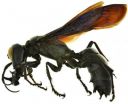(Press-News.org) Vienna, Austria: The use of ultrasound-guided surgery to remove tumours from women who have palpable breast cancer is much more successful than standard surgery in excising all the cancerous tissue while sparing as much healthy tissue as possible, according to the results of a randomised controlled trial.
As a consequence, researchers told the eighth European Breast Cancer Conference (EBCC-8) today (Friday) they expect their findings will change surgical practice and ultrasound-guided surgery (USS) should become the norm for excising palpable tumours i.e. those that can be felt and, at present, are excised "blindly", without visual aid from tools to help locate the precise position of the tumour during surgery.
When surgeons opt for breast conserving surgery and remove only the tumour rather than the whole breast, they need to include a margin of cancer-free tissue around the tumour during the surgery. This is so that they can be fairly sure that they have removed all the cancerous tissue in order to reduce the chance of local recurrence to a minimum when combined with standard radiotherapy. The margin of "healthy" tissue is analysed to check that it is free of cancer cells, and if it is not, then further surgery, or an additional radiotherapy boost may be required.
Dr Nicole Krekel, a PhD student in the department of surgical oncology and resident doctor in plastic and reconstructive surgery at VU University Medical Center in Amsterdam, The Netherlands, told the meeting: "Breast-conserving surgery for palpable breast cancer is generally performed with guidance from surgeon's palpation only, without help from intra-operative tumour localisation techniques. The standard method of surgery for non-palpable breast cancer involves a wire to identify the area of cancerous tissue that the surgeon needs to remove – a technique known as wire localisation. Unfortunately, both methods of excision are associated with a high rate of margins that contain cancer cells, as well as the excision of excessively large volumes of tissue. Despite studies showing the benefits of USS over wire localisation for non-palpable breast cancer, remarkably USS has not been widely integrated into daily surgical practice. In contrast to non-palpable tumours, there has been little research into the use of USS for palpable breast cancer."
Dr Krekel and her colleagues randomised 124 patients with palpable early stage breast cancer to either USS or standard palpation-guided surgery (PGS). They found that among the 61 women in the USS group only 3.3% of the margins contained cancerous cells compared with 16.4% among the 63 women in the PGS group. As a result, USS resulted in a significant reduction in re-excisions, mastectomies and extra radiotherapy. The amount of healthy tissue removed in the USS group was smaller than in the PGS group (40 cubic centimetres versus 58 cc respectively).
By measuring the volume of the tissue excised during surgery and the actual tumour diameters, the researchers calculated the amount of excess healthy tissue that had been removed, which gave them the "calculated resection ratio" (CRR). A CRR of 1.0 would indicate the ideal amount of tissue had been removed, while a CRR of 2.0 would indicate that double the amount necessary had been removed. They found that the CRR in the USS group was 1.0 (ideal), while in the PGS group it was 1.9.
"Our results show that USS can prevent the unacceptably high rate of margins containing cancer cells in palpable breast cancer excision, thus avoiding subsequent surgery or radiotherapy. In addition, USS largely reduces the amount of unnecessary healthy breast tissue resection, thereby contributing to the improvement of cosmetic results," said Dr Krekel.
"The trial was only completed in February this year and the results are striking. By using USS, 96.7% of all tumours were excised with adequate, tumour-free margins, compared with only 83.4% in the PGS group, yet the volume of tissue excised was significantly smaller in the USS group.
"The clinical implications of our study are tremendous and we believe they should be included in international guidelines. Given the overwhelming advantages of ultrasound-guided surgery, 'blind', palpation-guided excisions should be completely replaced, with ultrasound-guided surgery becoming the standard of care for both palpable and non-palpable breast cancer surgery. The surgeon performing adequate ultrasound will clearly provide better surgical practice. It is therefore highly recommended for surgeons to learn the skills needed to perform USS."
Dr Krekel said the reason why USS was superior to PGS was because it enabled surgeons to see all round the tumour while they were performing the operation. "Intra-operative US enables the surgeon to optimally position the incision on the breast, and to operate under direct vision. This provides the surgeon with more precision in localising tumours and determining the size of the lesions than palpation alone, and allows intra-operative orientation, and assessment of surgical margins. It allows complete tumour removal, while continuously monitoring the maintenance of adequate, small resection margins without unnecessarily sacrificing healthy breast tissue. After excision, the completeness of tumour excision can be checked once again with US. The technique is non-invasive, simple, safe and effective, and can be easily learned, " she explained.
Professor David Cameron, from the University of Edinburgh (Edinburgh, UK), and chair of EBCC-8 said: "This study offers the promise of more successful breast conserving surgery for women with early breast cancer. If the pathologist reports that there is still cancer present at the margin of an excision, usually more surgery is needed: importantly, this study offers a way to reduce the chance of this. However, it is a report from only one hospital, and these findings need confirmation from other teams of surgeons before they should become standard practice."
###
Abstract no: 1 LBA, Friday 15.00 hrs, Keynote symposium, Hall D
END
One cup or two faces? What we believe we see in one of the most famous optical illusions changes in a split second; and so does the path that the information takes in the brain. In a new theoretical study, scientists of the Max Planck Institute for Dynamics and Self-Organization, the Bernstein Center Göttingen and the German Primate Center now show how this is possible without changing the cellular links of the network. The direction of information flow changes, depending on the time pattern of communication between brain areas. This reorganisation can be triggered even ...
When this weekend's (March 24 to 25, 2012) Legacy Training weekend was announced a few months ago, it got the attention of Success Coach Peter Hobler.
Reading through the details, Hobler found out that the event included training by nine of the internet marketing industry's top leaders sharing their know how, expertise and even some of their marketing and leadership secrets.
Hobler started getting excited and shared, "When I read you needed to bring your computer for both actual hands on and over the shoulder training, I knew I had to do whatever I could to attend ...
Vienna, Austria: Results from a phase III clinical trial evaluating a new treatment for breast cancer in post-menopausal women show that the combination of two cancer drugs, everolimus and exemestane, significantly improves bone strength and reduces the chances of cancer spreading (metastasising) in the bone.
Professor Michael Gnant told the eighth European Breast Cancer Conference (EBCC-8) today (Friday) that the latest results from the BOLERO-2 trial would change clinical practice. "These results indicate a new standard of care for women with advanced oestrogen receptor ...
Even in places as seemly well-studied as the national parks of North America, new species are still being discovered. Using ultraviolet light that cause scorpions to fluoresce a ghostly glow, researchers from the University of Nevada, Las Vegas (UNLV) have discovered an intriguing new scorpion in Death Valley National Park. They named the species Wernerius inyoensis, after the Inyo Mountains where it was found. The study was published in the open access journal ZooKeys.
This new species is small, only 16 mm in length. "We almost overlooked this one during the survey" ...
A new and unusual wasp species has been discovered during an expedition to the Indonesian island of Sulawesi.
It was independently also found in the insect collections of the Museum für Naturkunde in Berlin, where it was awaiting discovery since the 1930s, when it had been collected on Sulawesi. The new species is pitch-black, has an enormous body size, and its males have long, sickle-shaped jaws. The findings have now been described in the open access journal ZooKeys.
The species belongs into the digger wasp family, which is a diverse group of wasps with several thousands ...
Realcomm Conference Group will be hosting a webinar on March 29 from 12:30pm to 2:00 pm (ET) to define high performance buildings and discuss the ways in which operation, design and organization of the systems play a key role in this new paradigm. Ryan Allbaugh, CIO of Childress Klein will lead the discussion along with Scott Boehm, Director Vykon Channel, Tridium; Paul Oswald, President, Environmental Systems Inc. (ESI); John Petze, Principal, SkyFoundry; and David Weinerth, EVP Marketing, SCIenergy Inc.
"We're hearing a lot about this topic as smart connected ...
The important changes to the way scientists name new plants that took effect on 1 January 2012 included the fall of the so-called Latin requirement - a stipulation that descriptions or diagnoses of new species had to be in Latin.
The new rules make it possible to take full advantage of an ongoing revolution in how botanists and mycologists verify that a particular species is indeed new to science: Many studies now routinely include the sequencing of short DNA regions that will amplify easily, even when the DNA comes from old specimens.
Such "barcoding" sequences can ...
There is a seemingly endless selection of affordable sedans on the market these days, but none are more appealing to Kelley Blue Book's kbb.com than the 2012 Volkswagen Passat. Kbb.com recently unveiled its 10 Best Sedans Under $25,000 list, placing the all-new Passat at the top. Volkswagen's newest midsize offering is available at any VW dealership and was singled out for its pitch-perfect mix of space, refinement and affordability.
Kbb.com evaluated sedans on typical factors like comfortable ride, handling, fuel efficiency, features and value, but it was sportiness, ...
A study by the Complutense University of Madrid (UCM) into the development of speech about the Civil War on Television Española (Spain's national state owned public television broadcaster) states that from the 70's, public television stopped portraying republicans as national enemies and acknowledged their bravery as combatants.
"In the final years of the dictatorship, in Television Española (TVE) documentaries and news programmes, they began to recognise the merits of the defeated republicans, claiming that they simply had a different stance, and they even had 'love ...
An international team of scientists, including some from Majorca and the Canary Islands, have described a new type of fossil scops owl, the first extinct bird on the archipelago of Madeira (Portugal). Otus mauli, which was also the first nocturnal bird of prey described in the area, lived on land and became extinct as a result of humans arriving on the island.
Twenty years ago, the German researcher Harald Pieper discovered fossil remains of a small nocturnal bird of prey in Madeira, which, until now, had not been studied in depth. The international team of palaeontologists ...








